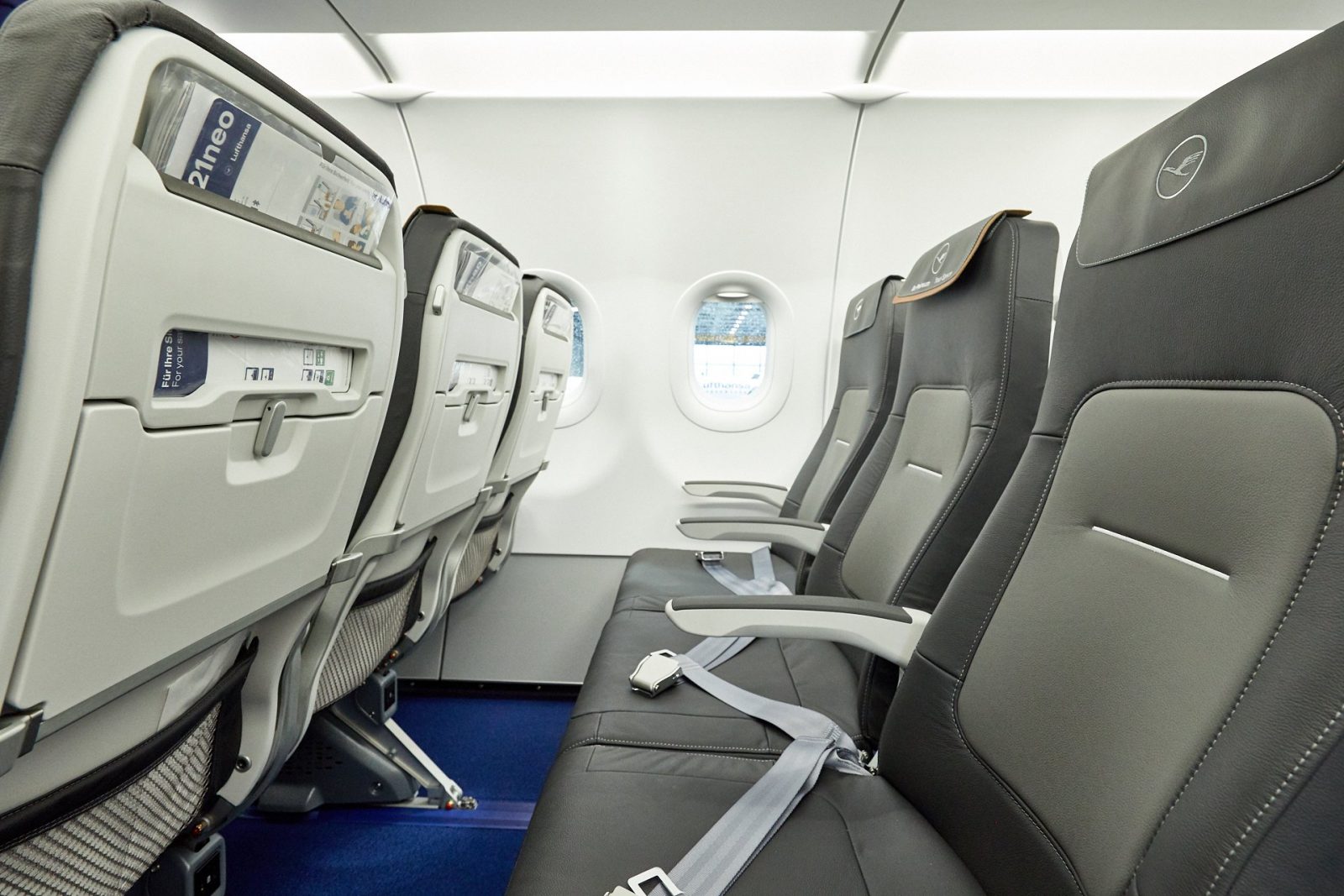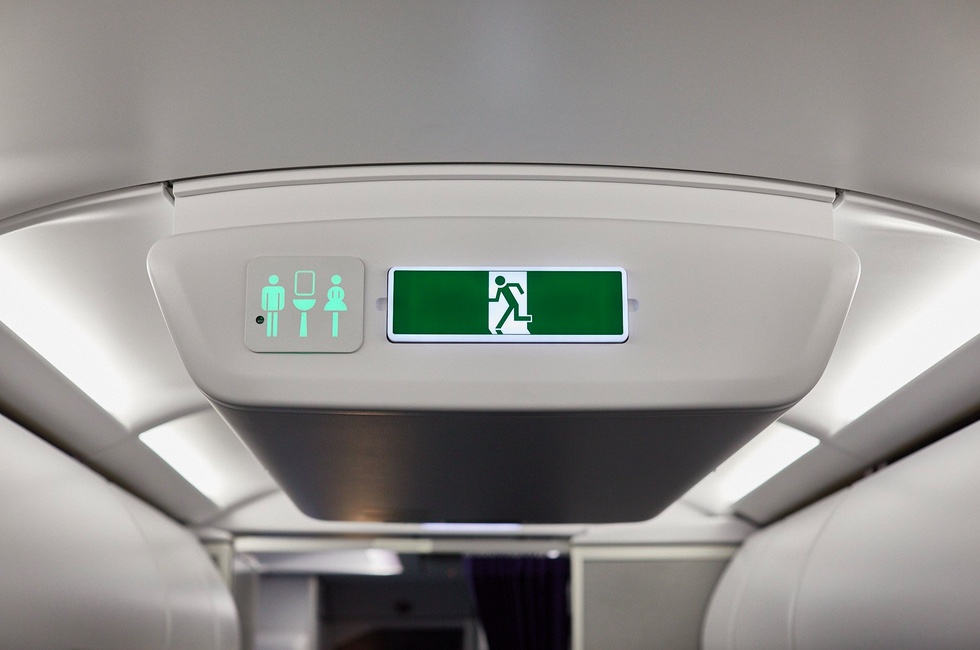
We’ve known for some time that Lufthansa plans to standardise the cabins of its short and medium-haul fleet of Airbus A320 family aircraft across its network airlines – that includes Lufthansa, as well as SWISS and Austrian Airlines. Once the project is complete, the Lufthansa Group network airlines will share a commonality in cabin design and configuration across all A320-family aircraft.
The idea is that procurement and maintenance will be cheaper, quicker and easier and that aircraft can be swapped between airlines without fuss. Lufthansa has just taken delivery of its first A321 which features the new look and cabin experience, including new seats with USB power at every seat and an integrated tablet holder built into the tray table.

The new seats look like a small upgrade on Lufthansa’s current slimline Recaro offering but the biggest improvement to the passenger experience might not be in the seat but in onboard stowage. When Jason Rabinowitz, who is known as @airlineflyer on Twitter, asked Lufthansa to share some more photos of the new look seat, Lufthansa revealed some other changes as well.
Developed by Lufthansa Technik, the airline has opted to install what’s known as a Center Ceiling Stowage (CCS) module on its new A321. The idea behind the module is to take Safety and Emergency equipment (SEP) like first aid kits, loudhailers, oxygen bottles, extension seat belts and spare life vests out of the overhead bins where they’ve been traditionally stored in order to give back room to passengers for luggage.
There’s nothing more frustrating to find that the overhead locker above your seat is filled with SEP equipment – of course, it has to be stored somewhere but that doesn’t make the stress of finding somewhere to stow your bag any less annoying.
The CCS has been developed specifically for what is known as ‘high-density cabin configurations’ – essentially squeezing as many seats as possible into the limited space of a single-aisle aircraft. In the quest to optimize that space, we’ve already seen wardrobes ripped out, lavatories shrunken and galley space halved.

In the Airbus-developed ‘Spaceflex’ galley, a cabin attendant seat has even been attached to a toilet door because there’s simply nowhere else to put it.
The CCS can be placed at the front, centre and aft of an aircraft cabin and is integrated with exit signage so passengers shouldn’t see any noticeable difference in ceiling height.
The seat itself is manufactured by Italian company Geven and comes with a fixed recline of 20 degrees for Economy passengers (an 8-degree increase on the Recaro model) while Business Class passengers will finally be able to recline their seats further – up to 26 degrees.
The Airbus A321neo is now configured and unified in such a way that aircraft can be adapted quickly and easily when transferred between Lufthansa Group airlines. This enables the Lufthansa Group to react faster and more flexibility to current developments and to move aircraft and capacities more easily and efficiently to another airline or to another hub.
Lufthansa expects to take delivery of 100 brand-new Airbus A320neo family aircraft by 2025. Interestingly, from the photos made available by Lufthansa, the airline group has decided to install standard sized overhead bins rather than larger ‘Airspace’ style ones that allow for more bags.
Mateusz Maszczynski honed his skills as an international flight attendant at the most prominent airline in the Middle East and has been flying ever since... most recently for a well known European airline. Matt is passionate about the aviation industry and has become an expert in passenger experience and human-centric stories. Always keeping an ear close to the ground, Matt's industry insights, analysis and news coverage is frequently relied upon by some of the biggest names in journalism.







